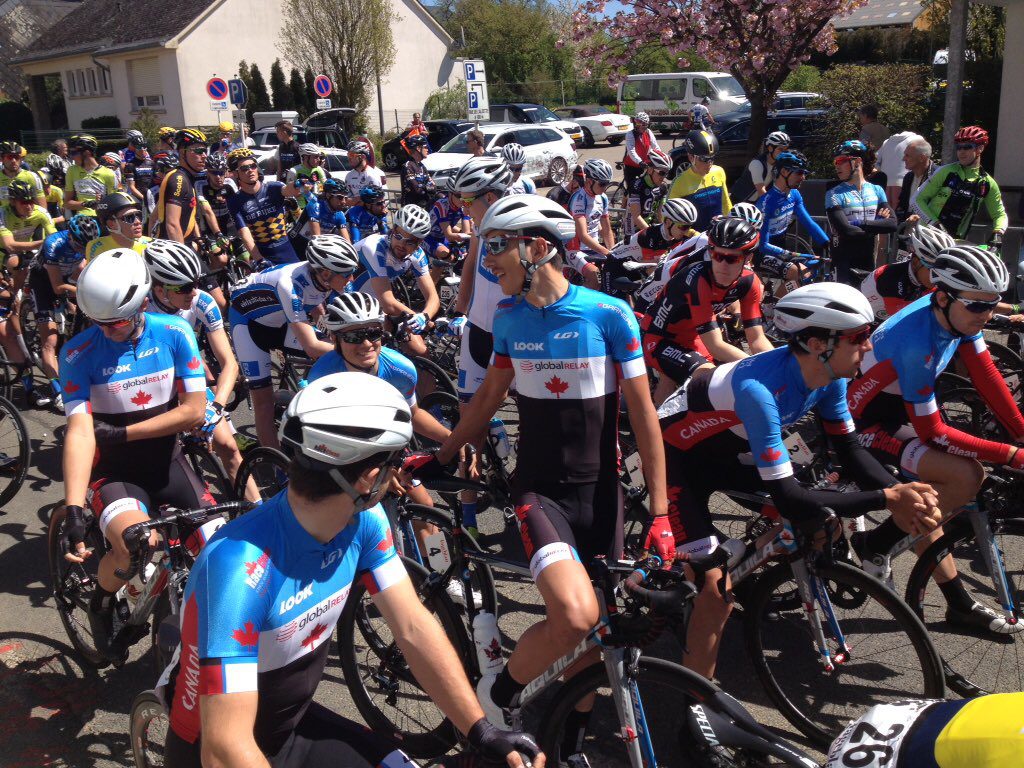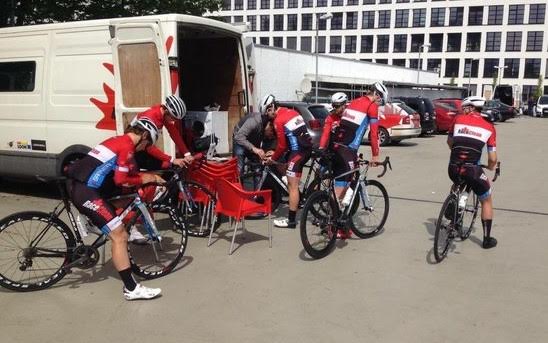Edward Walsh: Executing the plan
For teams with big stars the plan usually involves doing a lead-out for a top sprinter or setting up a climber for the final few kilometres.

by Edward Walsh
When you tune it to watch the final 10-km of any pro race, you often see what looks like chaos in the peloton, but what you are really seeing are multiple teams trying to execute their own plans on how to win the race. For teams with big stars that usually involves doing a lead-out for a top sprinter or setting up a climber for the final few kilometres on a climb. Some teams go into races with multiple options and are able to attack the race from multiple scenarios. Not many races are won without a detailed plan and good execution.
RELATED: When the race ends
RELATED: Taking the bumpy road through Belgium

At Eschorn-Frankfurt U23 Team RaceClean went into the race with a clear plan A and plan B. The race featured a two kilometre climb within the final 30-km and hit pitches of over 20 per cent. Plan A was to have myself position at the front going into the bottom and make the selection over the top. Alec Cowan and Will Elliott were able to put me in the perfect position leading up the steepest part of the climb. When the attacks started I was able to follow and quickly 15 riders were away. I was really suffering near the top, digging deep to hold the wheels. I was detached with about 200 meters of uphill remaining and after setting a new best five-minute power to try and get back to the front, I was swallowed up by the reduced peloton. After the descent that took us to 15-km to go, the group of 15 riders had a one minute gap and BMC were chasing hard having missed the move. Plan A had failed, I was not able to follow the wheels and I felt defeated. With BMC taking back time on the leaders, it was time to set up plan B.
We caught the lead group as we entered the finishing circuit with just under 10-km to go. Plan B involved getting Alec set up for a bunch sprint. I positioned myself in the top ten wheels and on the technical circuit I was able to stay up there with relative ease. With one lap to go I lost sight of Alec, he had lost a few spots in the line. I was now second wheel and with what looked like chaos behind, I prepared to go on a solo flyer within two kilometres to go. Just moments later, Alec got to my wheel and gave me the signal. I pulled as hard as I possibly could for the next 900-m, going through the final few corners fast enough to gap the rider in third position. Rounding the last corner I gave my last effort of the day and dropped Alec off at around 300 metres to go. I was screaming motivation at Alec as he came around me with the other sprinters. Alec pulled off a good finish to get sixth after what had been the best teamwork we had ever pulled off.
Post race comment: "Man, I don't even have a quote for today." @alec_cowan… His face says it all! #ZLMTour pic.twitter.com/CqjbTj8oqt
— Toronto V.C. (@TorontoVeloClub) April 15, 2016
Having a plan is a vital part of racing, you can only go with the flow for so long before you burn all of your energy. However any plan that you or your team makes, you have to be able to adapt and that is the most important part of all. When plan A didn’t work for us in Eschborn-Frankfurt, we did not call it a day; we adapted to the new situation and were still able to pull off a very respectable finish. A key part to adapting to the race situation is open and honest communication between your whole team. It takes practice and it takes trust.
As I write this we are currently racing in Luxembourg at the Flèche du Sud UCI stage race. Sean Mackinnon finished seventh on Stage 4 and is now leading the best young rider competition with one day to go. The final stage will involve a team plan that much is for sure.
Chillin' and relaxin' before the start of the last stage of #FlecheduSud. Boys are on a clear (or white) mission. pic.twitter.com/ALZBnj27LK
— Toronto V.C. (@TorontoVeloClub) May 8, 2016

